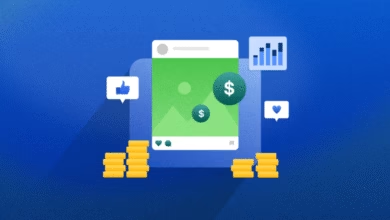Optimizing Email for AI Inboxes & Zero-Click Journeys

▼ Summary
– AI is reshaping email marketing by enabling zero-click content that delivers value directly in the inbox without requiring clicks.
– Zero-click marketing uses snippets, previews, and summaries to create impact through brand recall and assisted sales rather than clicks.
– Email clients like Gmail use AI to auto-extract promotional details, reducing marketer control over displayed content and engagement tracking.
– Schema markup allows marketers to specify what information is shown in zero-click environments, preserving message integrity and brand trust.
– Email still drives actions like direct traffic and sales, but attribution requires monitoring indirect signals like traffic spikes and assisted conversions.
The rise of AI-powered inboxes is transforming how subscribers interact with email, shifting the focus from click-throughs to instant value delivery. Zero-click marketing is becoming essential as platforms like Gmail and Yahoo automatically extract and display content directly in the inbox, making opens and clicks less central to engagement. This evolution doesn’t diminish email’s importance, it amplifies its potential for influence, provided marketers adapt their strategies to prioritize immediate impact over traditional metrics.
Zero-click marketing centers on delivering meaningful content without requiring additional user action. Whether through search snippets, social media carousels, or email previews, the goal is to inform, persuade, or entertain within the initial view. In email, this means crafting messages that summarize key points, highlight promotions, or inspire action even if the recipient never clicks through. The inbox itself becomes a touchpoint, a miniature landing page where brands can make an impression without redirecting the user elsewhere.
AI tools are accelerating this shift by parsing email content to surface details like discount codes, expiration dates, and product images directly in the inbox. Gmail’s Promotions tab, for instance, uses machine learning to pull relevant offers into view, sometimes bypassing the open entirely. While this enhances user experience, it introduces challenges for marketers: loss of control over what content is highlighted and reduced visibility into engagement through conventional click tracking.
Despite these changes, email remains a powerful driver of behavior. Subscribers may type a URL directly into their browser, search for a brand on Google, or even share a screenshot of a promotion, all actions sparked by an email, yet rarely attributed to it. This “nudge effect” means email continues to influence decisions even when clicks decline.
To regain some control in this environment, implementing schema markup is critical. This structured data code helps email clients like Gmail correctly identify and display the most important elements of your message, such as headlines, promo codes, or product images, reducing the risk of irrelevant content being highlighted. Schema ensures your intended message stays intact, improving both accuracy and brand consistency.
Attribution has grown more complex in the zero-click era, but marketers can uncover email’s hidden impact by monitoring indirect signals. Look for spikes in direct traffic in Google Analytics following campaign sends, overlay send dates with sales data to identify short-term revenue lifts, and use multi-touch attribution reports to recognize email’s role in assisted conversions. Educating stakeholders across the organization about these influence-based metrics is also key to aligning expectations and validating email’s contribution.
Cross-department collaboration becomes increasingly important in adapting to these shifts. Development teams can help integrate schema into email templates, while analytics and broader marketing groups can assist in tracking influenced conversions and refining reporting frameworks. The core responsibility, however, remains with content creators: producing high-value emails that resonate whether read in full or scanned by AI.
Email is far from obsolete, it’s evolving. By embracing zero-click strategies, marketers can ensure their messages remain relevant, influential, and effective in an AI-driven landscape.
(Source: MarTech)

